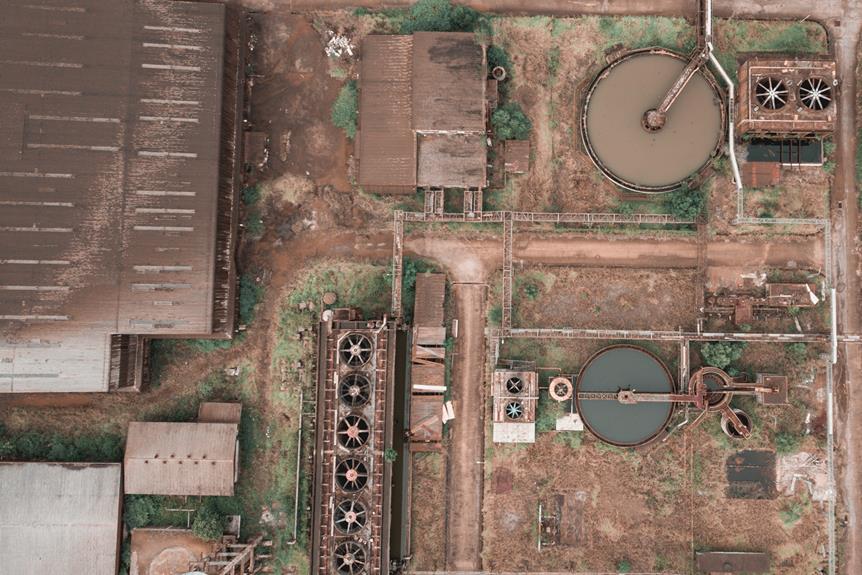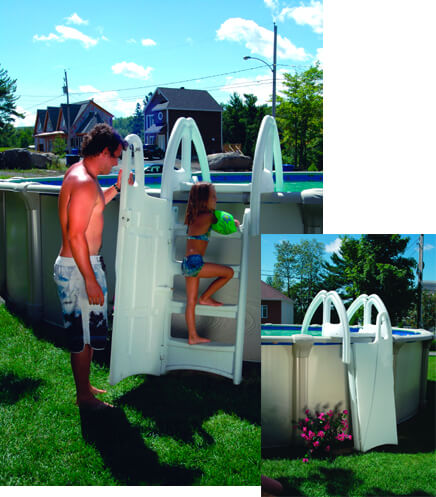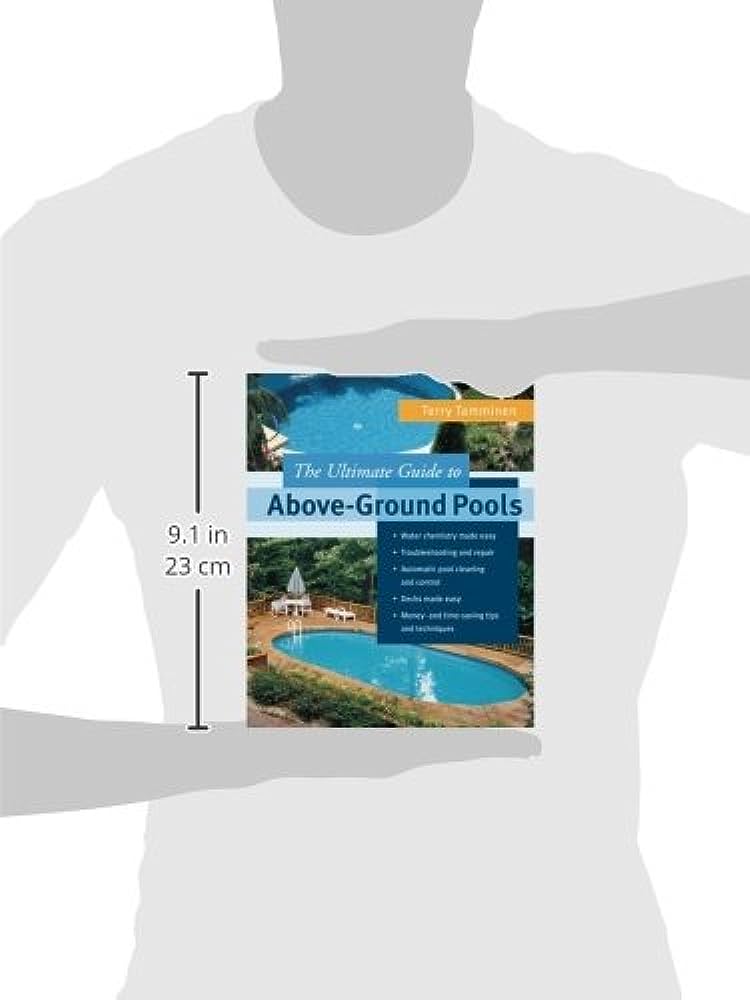Are you ready to safeguard your splendid above ground pool from the harsh winter weather? Prepare to preserve your pool’s pristine condition by following these vital steps for proper winter storage. From draining and cleaning the pool to uninstalling equipment and folding the liner, we’ll provide you with expert instructions to ensure your pool remains undamaged and ready for future seasons. Don’t let freezing water and neglected maintenance ruin your aquatic oasis. Let’s dive into the essential steps to store your above ground pool correctly.
Key Takeaways
- Draining and cleaning the pool is essential before storing for the winter
- Properly uninstalling the pool and keeping track of all parts is important
- Folding and storing the pool liner in a secure manner is crucial to prevent damage
- Winterizing steps, including cleaning, balancing chemicals, and using a secure cover, are necessary for protecting the pool during winter months
Draining and Cleaning the Pool
To prepare your above ground pool for winter storage, you should first drain the water and clean the pool liner with a mixture of detergent and water. This is an essential step in pool winterizing tips or pool closing. Start by draining the water using a siphon, submersible pump, or drain adapter. Make sure to have a plan for where the excess water will go. Once the pool is empty, it’s time to clean the pool liner. Mix detergent and water in a bucket and scrub the liner using a brush or sponge. Be thorough and make sure to cover all areas. Rinse off the soap with a hose to remove any residue. This will ensure that your pool is clean and ready for winter storage.
Uninstalling the Pool
If you need help, consider seeking professional assistance when uninstalling the pool. Winter pool storage is an important step in above ground pool winterization. To uninstall the pool, start by unhooking all the equipment and disassembling the frame. If you’re unsure about any steps, it’s always best to consult a professional. Make sure to keep track of all the parts to ensure a smooth reinstallation in the future. Store the pool liner by removing any obstructions that could puncture it, folding it several times, and rolling it tightly into a cylinder. Place the folded liner in a large bag or sack, and consider hanging it to keep it off the ground and away from rodents. Don’t forget to safely store all pool chemicals to prevent any accidents.
Folding and Storing the Liner
When folding and storing the liner, make sure to remove any obstructions that could puncture it. This will help to maintain the integrity of the liner and ensure that it can be used again in the next swimming season. To assist you in understanding the necessary steps for winterizing your pool, here is a helpful table to guide you through the process:
| Step | Description |
|---|---|
| 1 | Clean the pool by removing debris and leaves |
| 2 | Balance all chemicals to appropriate levels |
| 3 | Lower water below skimmer and return lines |
| 4 | Blow out plumbing lines with air compressor |
| 5 | Unhook all pool equipment and store for winter |
| 6 | Add algaecide and shock treatment to pool water |
| 7 | Remove ladders, stairs, and pool toys |
| 8 | Choose a secure winter pool cover |
| 9 | Regularly check the pool cover for snow, ice, or water buildup |
| 10 | Inspect the pool for any signs of damage or leaks |
| 11 | Keep a log of pool maintenance during winter months |
Reasons for Storing the Pool
By properly storing your pool during the winter months, you can prevent structural damage, protect expensive equipment, and extend the lifespan of the pool. Storing your pool is essential to avoid potential issues caused by freezing water and cold weather. When you store your pool, you ensure that it remains intact and ready for use in the upcoming seasons. Additionally, storing your pool allows you to maintain the water chemistry and protect your pool equipment from damage. To prepare your pool for winter, choose a secure winter pool cover that will keep debris, snow, and ice out of the pool. Regularly check the pool cover for any buildup and inspect the pool for any signs of damage or leaks. By following these winter pool preparation steps, you can ensure a smooth transition into the subsequent section about winterizing steps for your above ground pool.
Winterizing Steps for Above Ground Pool
To properly prepare for the colder months, ensure the pool water is balanced and free of debris before lowering it below the skimmer and return lines. Winterizing your above ground pool is crucial to protect it from potential damage caused by freezing temperatures. By following these steps, you can ensure that your pool is well-maintained and ready for the winter season.
First, clean the pool by removing any debris and leaves. Next, balance all chemicals to appropriate levels to prevent any water chemistry issues during the winter months. Lower the water level below the skimmer and return lines to prevent any potential damage caused by freezing water. It is also important to blow out the plumbing lines with an air compressor to remove any remaining water.
After that, unhook all pool equipment and store it for the winter. Adding algaecide and shock treatment to the pool water will help prevent algae growth. Remove ladders, stairs, and pool toys to avoid any potential damage. Choose a secure winter pool cover to protect the pool from snow, ice, and debris. Regularly check the pool cover for snow, ice, or water buildup and remove it as necessary. Inspect the pool for any signs of damage or leaks and keep a log of pool maintenance during the winter months.
Frequently Asked Questions
How Do I Prevent Mold or Mildew From Forming on the Pool Liner During Winter Storage?
To prevent mold or mildew from forming on your pool liner during winter storage, it’s important to ensure the liner is clean and dry before storing. Thoroughly clean the liner with a mixture of detergent and water, then rinse it off with a hose. Allow the liner to completely dry before folding and storing it. Consider hanging the liner to keep it off the ground and away from moisture. This will help maintain its condition and prevent mold or mildew growth.
Can I Leave Water in the Pool During Winter Storage?
No, you should not leave water in the pool during winter storage. Freezing temperatures can cause the water to expand, which can lead to damage to the pool liner and other components. It is important to drain the pool completely to prevent any structural damage. Follow the proper winterizing steps to ensure the longevity of your above ground pool.
What Should I Do if I Notice a Tear or Hole in the Pool Liner While Storing It for the Winter?
If you notice a tear or hole in the pool liner while storing it for the winter, don’t panic. Take immediate action to prevent further damage. Start by cleaning the area around the tear or hole and drying it thoroughly. Then, apply a high-quality pool liner patch kit, following the instructions carefully. This will ensure a watertight seal and keep your pool liner intact. Remember, addressing the issue promptly will save you from costly repairs in the future.
How Often Should I Check the Pool Cover for Snow, Ice, or Water Buildup During the Winter Months?
During the winter months, it is important to regularly check your pool cover for snow, ice, or water buildup. This will help prevent any potential damage or stress on the cover. It is recommended to check the pool cover at least once a week, especially after heavy snowfall or rain. Removing any accumulated snow, ice, or water will ensure that the cover stays in good condition and continues to protect your pool throughout the winter season.
Are There Any Specific Safety Precautions I Should Take When Storing Pool Chemicals for the Winter?
When storing pool chemicals for the winter, safety should be your top priority. Start by reading all instructions and warnings on the chemical containers. Wear protective gloves and goggles while handling them. Store the chemicals in a cool, dry place away from direct sunlight and out of reach of children and pets. Keep them securely sealed to prevent leaks or spills. Remember, proper storage ensures a safe and enjoyable swimming season next year.
Conclusion
In conclusion, properly storing your above ground pool for the winter is crucial to protect it from damage and ensure its longevity. By following the steps outlined in this article, you can prevent structural damage, water chemistry issues, and protect your pool equipment. Additionally, storing your pool correctly will allow you to enjoy it for more seasons to come. Remember, investing time and effort in winterizing your pool now will save you from potential headaches and expenses in the future.






